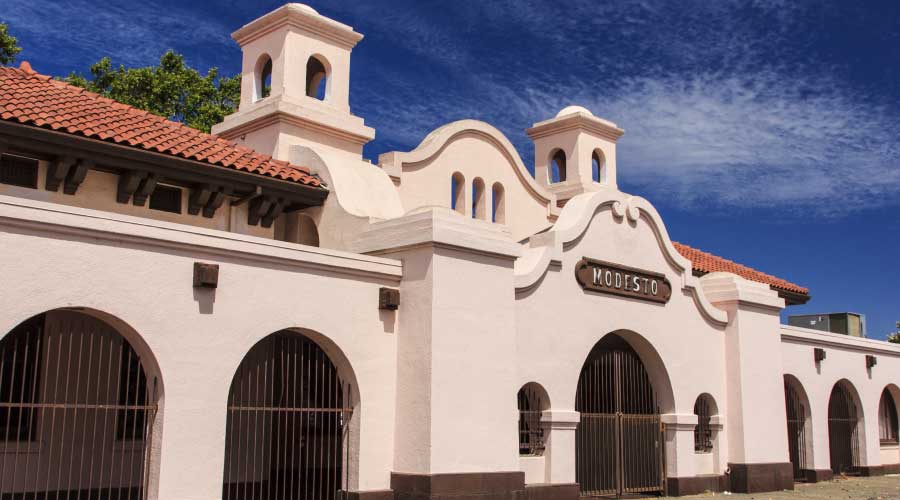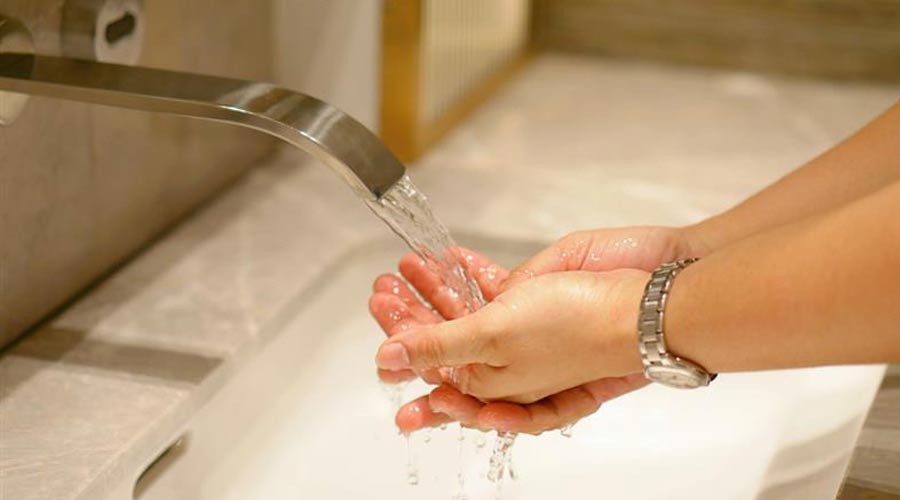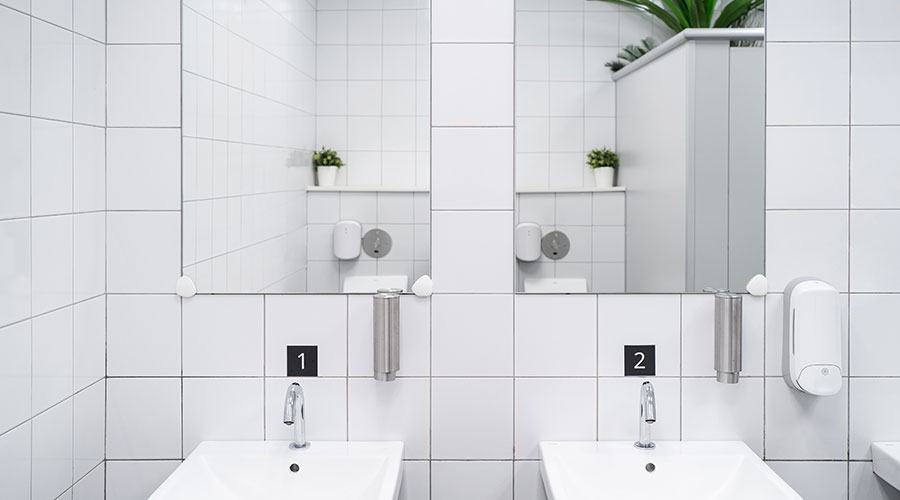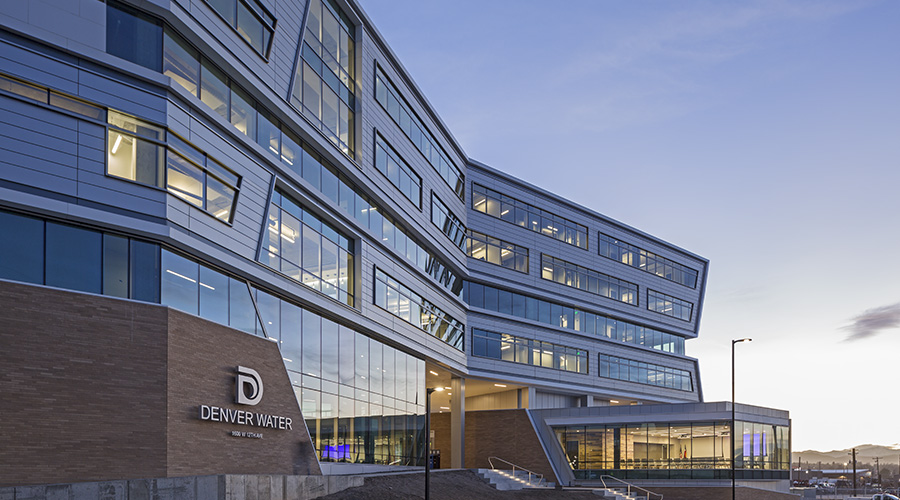Modesto Transit Center Upgrade: Touchless, Hygienic Restrooms
Modesto Transit Center upgrades restrooms and plumbing system to meet evolving hygiene demands and the areas’ changing transportation needs.
By Dan Hounsell, Senior Editor
The Modesto Transit Center is rolling with the changes — again.
Built in 1915 to serve railroad traffic in California’s Central Valley, the 3,560-square-foot facility eventually closed in the early 1970s, only to be restored as a regional bus terminal in 1993. From 2021 to 2023, the facility with a historic building designation went through a $5.7 million remodeling and upgrade that brought its total size to 4,810 square feet.
One key element of the project was the upgrade and expansion of the center’s restrooms serving passengers, as well as those for the center’s staff.
“Staff restroom capacity and public restroom capacity were significantly undersized to provide proper fixture counts for the current occupants,” says Patrick Crowley, P.E., facility manager for the city of Modesto.
Meeting demands
The Modesto Transit Center upgrade resulted from the need to upgrade an aging facility and from the consolidation of regional bus operations, Crowley says.
“We increased the capacity of the restrooms from single-use to multi-use with designated women’s and men’s restrooms, and we modernized the public restrooms,” he says. “This included revised sanitary lines, all touchless devices, in-wall sensors for vandalism control, water saving fixtures, new partitions, solid surface counters, and improved aesthetics.”
The upgrades reflected the transit center’s two different groups of users.
“It's really two different pieces,” he says. “The bus drivers and the people who do the dispatch for the bus routes originally only had a one men's single-use and one women's single-use. Then California mandated gender-neutral restrooms. It was a single use, and we had upwards of 200 people there, so it was woefully inadequate. On the public side, basically we just reconfigured. They didn't actually get more fixtures. We just changed the orientation of the entryway. The fixture count stayed the same for the public side.
“The increase basically was to accommodate staff," he says. “That was based on how many people are working there, as well as the stop for the bus drivers. We went from two water closets in the original configuration because it was two single uses to now the women’s restrooms have three water closets, and the men's restrooms have one water closet and two urinals.”
Crowley says the upgrades also brought the restrooms into compliance with the Americans with Disabilities Act’s requirement for a 5-foot turning radius of clear floor space for a patron in a wheelchair to turn around within the restroom stall.
Going ‘no touch’
The Modesto Transit Center expansion and upgrade project addressed one critical element of restrooms in institutional and commercial facilities in the COVID-19 era – the reluctance of restroom users to touch surfaces in an effort to prevent the spread of illness. As a result of the heightened demand for hygiene in restrooms, touchless fixtures have moved from the “nice to have” category to the “must have” category.
“The remodel includes all touchless devices with in-wall flush valve sensors, low-flow devices, air dryers in public restrooms and air dryers and paper towel dispensers in staff restrooms,” Crowley says. “It also included solid surface counter tops and new multi-use employee restrooms and partitions.”
The choice of products reflects the evolving expectations among restroom users for improved hygiene.
“There is minimal touching now because everything is sensor-based on the soap dispensers,” Crowley says. “You don't touch the faucet. You don't touch the flush valves. Instead of the old tile with grout countertops, we have a solid surface. Cleaning is significantly easier because there are no grout lines. There's nothing for people to touch, so from that perspective, it's keeping people healthy.”
Beyond hygiene, touchless fixtures also helped the transit center address a problem plaguing restrooms in many facilities – vandalism. Older-generation fixtures had become targets for vandalism and abuse from restroom users, and in the center’s case, the general public was not the biggest source of trouble.
“The general public was less of a vandalism problem than the drivers,” Crowley says. “They were incredibly rough on the faucet handles. Everything was touch in the original configuration, and they tended to use their feet to hit the flush valves on the toilets. On the sinks, for some reason we would go through six or eight faucet handles every year. It was crazy. I don't know what they did in there.
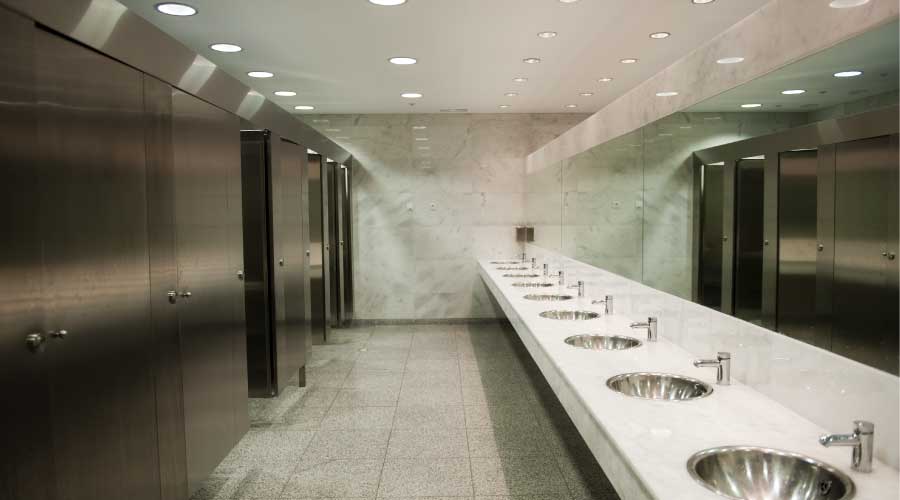
“With the touchless fixtures, it’s just the waving of a hand in front of a sensor now. It's only been a few months, but there's nothing for them to touch. That has gone a long way toward helping. On the public side, we have just air dryers now, so clogged drains have been significantly reduced. There are no paper products for people to flush down the toilet” aside from toilet paper and seat covers.
Looking for trouble
The planning process for the Modesto Transit Center’s upgrade project included one phase that is becoming more common in facilities seeking to ensure a project’s performance long after completion – plan review by the facilities team.
“We participated in plan review and project acceptance,” Crowley says. “As the maintenance element for the facility, it is greatly appreciated that the organization recognizes the full impacts of buildings on the life-cycle aspects of ownership.”
What did Crowley and his team look for in reviewing the layout of the upgraded restrooms and the new products to ensure post-installation maintainability?
“Obviously, does it meet code for the gallons per minute flow?” he says. “Who was the manufacturer? Is it somebody where you can get replacement parts? What is the supply chain for repair parts?
“Those are some of the things that we're looking at from our perspective. What is the strainer on the faucets? What is the mixing valve on the flush valves for the urinals and water closets? What kind of diaphragm did they take?”
The team’s plan review turned up one concern related to the operation of new-generation fixtures and dispensers.
“One of the things we called out but unfortunately were not successful with is that the sinks and touchless paper towel dispensers are battery operated,” Crowley says. “That's one of the things we look at from a maintainability perspective. Batteries are expensive, from having to buy them to having staff change them and properly dispose of them. You just can't throw them in the garbage. The only thing we were successful with was getting the flush valves hardwired.”
One maintenance problem that surfaced after the project’s completion related to the latches on restroom stall doors.
“The (latches) that were installed, on the surface, they look fancy,” Crowley says, adding that the latch includes a red and green indicator on the outside to indicate stall occupancy. “For some reason, people don't pay attention to that and try to open it anyway. The latch was pot metal, and it was relatively thin. They were snapping off the latches on the partition doors where it goes into the slide on the fixed portion of it.
“Since then, we've gone to a heavier-duty latch that we use in most of our other sites that are a thicker material. We've gone through 12 latches in seven weeks. So far, we haven't had one break with a heavier latch, but it's only been three and a half weeks.”
Crowley and his team also received feedback from restroom users about a perceived lack of water pressure from the new fixtures.
“When occupants first moved back in, we got a lot of feedback saying that there was not a lot of water pressure,” he says. “There were concerns that the flushing of the fixtures was lower.
“They were used to 3 gallons, 5 gallons for flushing and 2-3 gallon permitted faucets. With the new code, it's not that there was a problem. It was just perception. They had to get used to having low-flow fixtures. There actually wasn't anything wrong. It was just not the same volume of water that they were used to prior to the reconstruction.”
Not surprisingly, further changes are likely for the Modesto Transit Center. Crowley says plans are in the works to expand passenger rail service to Modesto in 2026.
Dan Hounsell is senior editor for the facilities market. He has more than 30 years of experience writing about facilities maintenance, engineering and management.
Related Topics:








